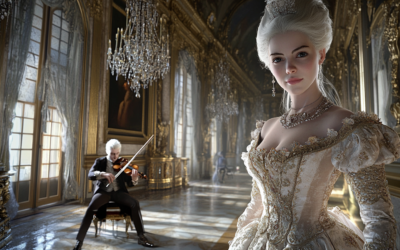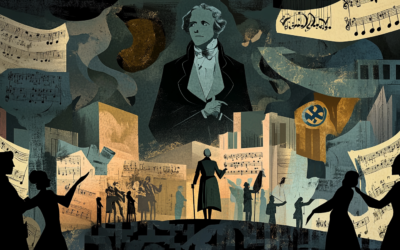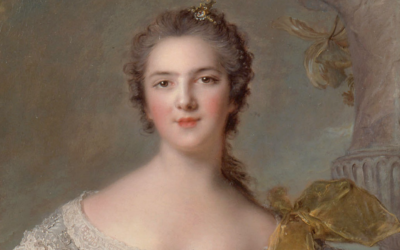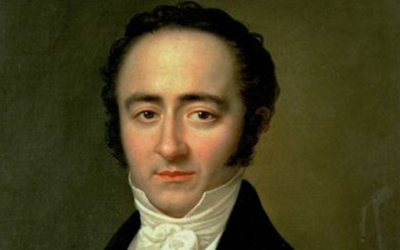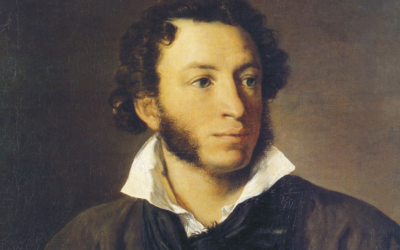Mozart's Symphonies
The Hidden Legacy of Michael Haydn
The persistent misattribution of works between Michael Haydn and Wolfgang Amadeus Mozart reveals a story of rivalry, imitation, and misrepresented genius. Even the famous Symphony No. 37 in G Major K.444, long considered a Mozart masterpiece, stands today as a testament to an intricate web of musical borrowings and historical misconceptions. As it turns out,
Mozart merely added an introduction to Haydn’s symphony, yet this was enough for it to remain falsely attributed to him for decades.
Such instances provoke questions about Mozart’s true originality and his family’s dismissive attitude toward the accomplished Michael Haydn.
Mozart: The Fall of the Gods
This book offers a fresh and critical look at the life of Wolfgang Amadeus Mozart, challenging the myths that have surrounded him for centuries. We strip away the romanticised image of the “natural genius” and delve into the contradictions within Mozart’s extensive biographies. Backed by nearly 2,000 meticulously sourced citations, this work invites readers to explore a deeper, more complex understanding of Mozart. Perfect for those who wish to question the traditional narrative, this biography is a must-read for serious music lovers and historians.
"How can one proclaim Mozart's originality when so much of his success relied on the brilliance of Michael Haydn?"
Mozart: The Fall of the Gods
Unveiling the True Composer Behind the Notes
The Illusion of Originality
The path of confusion over authorship winds through Mozart’s symphonies, culminating even with the acclaimed Jupiter Symphony, K.551. Its anonymous manuscript, still housed in the Biblioteca Estense in Modena, continues to be overlooked in modern critical studies. Yet, the most perplexing case remains Symphony No. 37 in G Major, K.444. Once celebrated as an authentic Mozart composition, it later emerged as a mere embellishment upon Michael Haydn’s Symphony No. 25, dated 23 May 1783. Mozart’s only contribution? A brief Adagio maestoso before Haydn’s Allegro movement.
A Legacy of Borrowing
Mozart’s alterations to Haydn’s original symphony went beyond the mere addition of an introduction. He modified the central Andante sostenuto, stripping away the bassoon part, arguably diminishing its richness. Historians have postulated that Mozart might have copied Haydn’s work to better understand his style, or as a tribute to the elder composer. Yet, the removal and adaptation suggest a more complex intent—an effort to make Haydn’s symphony less recognisable. Even today, musicologists struggle to accept that this was more than a homage. No evidence from letters, concert programs, or noble diaries ever credits Michael Haydn.
The Unacknowledged Influence
Mozart’s dependence on Michael Haydn’s compositions surfaces repeatedly. While Mozart’s supporters frame these borrowings as reverent, the letters between Wolfgang and his family tell a different story. For instance, a young Mozart wrote from Naples in 1770, anxiously requesting minuets by Haydn. He not only copied them but openly wondered if they had been “stolen.” Despite his supposed reverence, he pleaded for more minuets, openly mocking Haydn’s work in correspondence.
The Mozart family’s disdain for Michael Haydn intensified over time, painting him as an unreliable drunkard. Leopold Mozart even referred to Haydn as one of the “asinine” musicians of Salzburg. Despite this, Wolfgang relied on Haydn’s compositions, even for performances in Vienna. One has to wonder—if Mozart was such a master of counterpoint, why did he need to borrow fugues from Haydn?
Reassessing Mozart’s Musical Inheritance
The catalogue of music misattributed to Mozart is extensive. Works like the Adagio and Fugue in D Major (K.291) and various sacred compositions were lifted from Haydn, either wholly or in part. The letters reveal a pattern of plagiarism, mockery, and opportunism. The famous request for Haydn’s Tres sunt and the Lauda Sion—which ended up in the Köchel catalogue under Mozart’s name—only reinforce this narrative. The myth of Mozart as an unassailable genius collapses when faced with the evidence of his extensive borrowing from a composer his family ridiculed.
A Final Irony
In the end, Michael Haydn remains an unsung hero, a composer whose works formed the bedrock of Mozart’s supposed achievements.
You May Also Like
The Kolb Concerto: A Mozartian Mirage?
The Kolb Concerto’s dubious origin and poor musical quality expose yet another myth in the Mozartian canon. If this is the work of a genius, then perhaps we’ve been fooled for centuries.
The Adélaïde Deception: Mozart’s “Lost” Violin Concerto and the Art of Musical Forgery
In the early 20th century, the “discovery” of Mozart’s sixth violin concerto in Paris created a sensation. Dubbed the Adélaïde Concerto and supposedly written for Madame Adélaïde of France, it was hailed as a testament to Mozart’s genius. However, as the story unfolds, it becomes clear that this masterpiece was not the work of the child prodigy but rather a carefully orchestrated hoax by Marius Casadesus. Despite its unmasking as a forgery, the concerto continues to captivate audiences, raising questions about authenticity and the music industry’s willingness to deceive for profit.
Mozart and the Nationalist Illusion: The 1931 Festival and Its Legacy
The Salzburg Festival, far from being a mere celebration of Mozart’s genius, was born out of nationalist ambitions during a turbulent period in Austro-German history. Conceived by figures like Max Reinhardt, Heinrich Damisch, and Friedrich Gehmacher, the festival was deeply rooted in ultranationalistic ideals, transforming Mozart’s legacy into a tool for cultural dominance. The truth behind its founding has long been obscured, but the primary sources tell a different, darker story.
K.6 and K.7 Sonatas: A Fabricated Genius?
The earliest sonatas of Wolfgang Amadeus Mozart, K.6 and K.7, are traditionally seen as proof of his precocious genius. But as we explore the murky origins of these works, we find that they may be more a product of Leopold Mozart’s ambition than Wolfgang’s musical talent. The truth, as always, lies somewhere between the notes.
Georg Nissen and the Missing Notebooks – Part II
This second part delves deeper into Georg Nissen’s scheme to expose the truth about Mozart’s death, and the roles of Constanze Mozart and her sons in keeping it buried. As new details emerge, the mystery surrounding the famous composer’s final days grows even darker, with powerful forces potentially at play.
Mozart and Salieri
Pushkin does not see Salieri as a mere mediocre. In fact, Salieri embodies the struggle of the artist, much like Michelangelo, who reaches greatness through relentless effort. Pushkin himself identifies with both Mozart and Salieri, but he emphasises that true art demands work, discipline, and sacrifice. In poisoning the Mozartian element within himself, Salieri performs a service to art, freeing it from the frivolity of effortless genius. ‘Can genius and malice coexist?’ Pushkin’s answer is complex, but in the end, Salieri’s act seems to affirm that true creation lies in the hands of those who strive.



